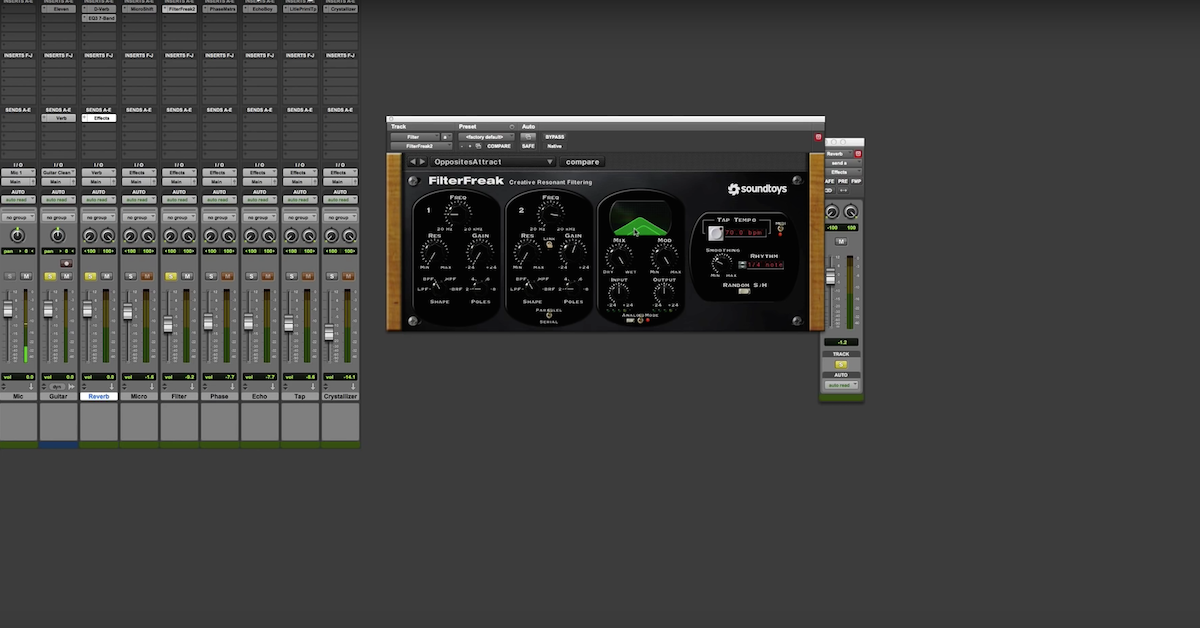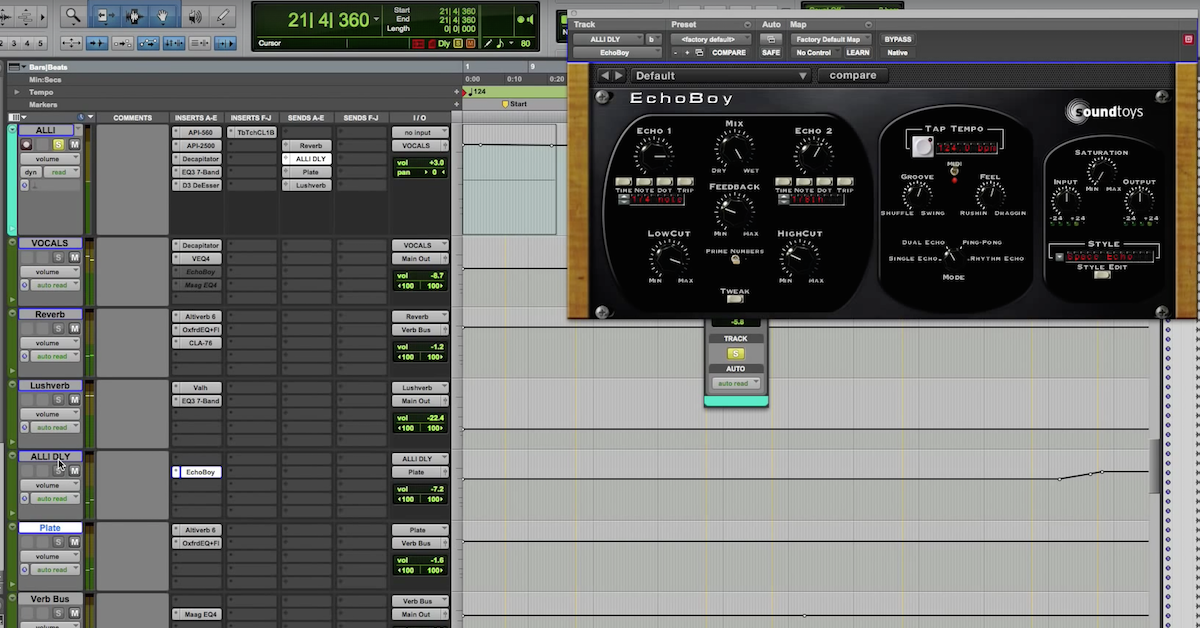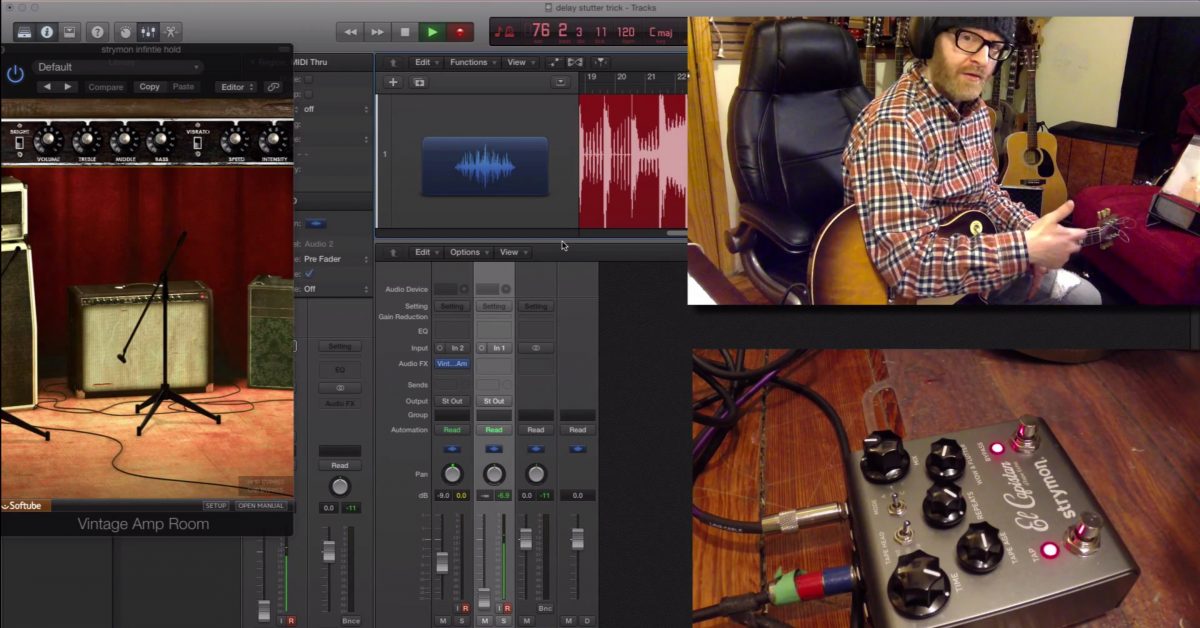How to Stack Delays to Create a Lush Guitar Effect
Today, I want to talk about stacking delays with almost identical times to create a really cool, lush, effect.
I came across this effect on a gig where I had two different delays running at the same time. I didn’t realize it, I only meant to have one of them on, but somehow, they ended up with the same time settings, and when I started playing, the way that the notes were stacking on each other were really neat.
It’s not uncommon for me to have two delays in my chain when I’m gigging. I’ll have one set to a fast slapback delay, and then another one to a longer delay, and that way, depending on what part I’m playing in a song, I don’t have to bend down and make too many tweaks to either delays.
We’ll be using the UAD EP-34, as well as the Eventide H-3000. Now, the EP-34 is where I’m going to be getting some of the grit, wow, and flutter that you would get from a real tape echo unit, and the Eventide, I’m going to get that classic, 80’s, clean, digital delay sound.
You can use a number of plug-ins for this. The stock plug-in within Pro Tools or Logic, or I use the PSP Analog Delay sometimes. It doesn’t matter, but I think what matters is having two slightly different delays from each other. I think that’s where some of the fun is, is they each kind of morph the sound in their own unique delay, instead of stacking two identical delays on top of each other.
Let’s listen to this first example with no delay on it.
[guitar plays]
It’s a real simple part. Let’s put on both delays.
[guitar plays with delays]
Let’s just hear with the EP-34.
[guitar plays with EP-34 delay]
You can see that I’m hitting the echo pretty hard so that it saturates with a little bit of that overdrive.
Let’s listen to the H-3000 now.
[guitar plays with H-3000 delay]
It’s pretty clean. We’ll put them both together…
[guitar plays with both delays]
What’s interesting is the Eventide actually cleans up the EP-34, and that’s not something you would expect.
The order that you run these plug-ins is going to affect the outcome, so if you put the digital delay first, then run that into the tape echo, then that’s going to alter it, because the dirty signal, the saturated signal, it’s going to come at the end.
This next example is definitely in the U2 family of guitar parts.
Let’s listen to it with no effects first.
[guitar plays]
Let’s hear it with both effects.
[guitar plays with both delays]
Let’s hear it with the EP-34 only.
[guitar plays with EP-34]
Let’s hear it with the Eventide only.
[guitar plays with Eventide]
They both sound good individually on their own, but there’s just something really exciting happening when they’re both together.
For the last example, I used the tone knob on a Stratocaster to swell in chords for an ambient-like effect. The only thing I changed is I put an LA-2A before the delays, just to compress the signal a little bit. Often when you’re doing swells on the guitar, it’s hard to get a lot of signal out of it, because by the time you swell the chord, the attack is gone.
I’ll often use an LA-2A or 1176, or any compressor for that matter, to squeeze it and get a little more sustain and volume out of it.
Let’s listen to it with no effects.
[guitar plays]
Okay, let’s listen to it with both delays on.
[guitar plays with delays]
In this example, you could really hear the wow and flutter of the tape echo, and how it’s feeding the other delay, because of the legato nature of the part.
I’m going to take this a step further by sending it to a reverb. I like to do this on these parts because it just expands it, and makes it sound more symphonic, but it’s also going to bring out some interesting frequencies and harmonics in the upper registers.
[guitar plays with reverb and delays]
It almost has a glacial like quality to it.
That’s my tip for this week. I hope you give it a shot and have great success with it.





